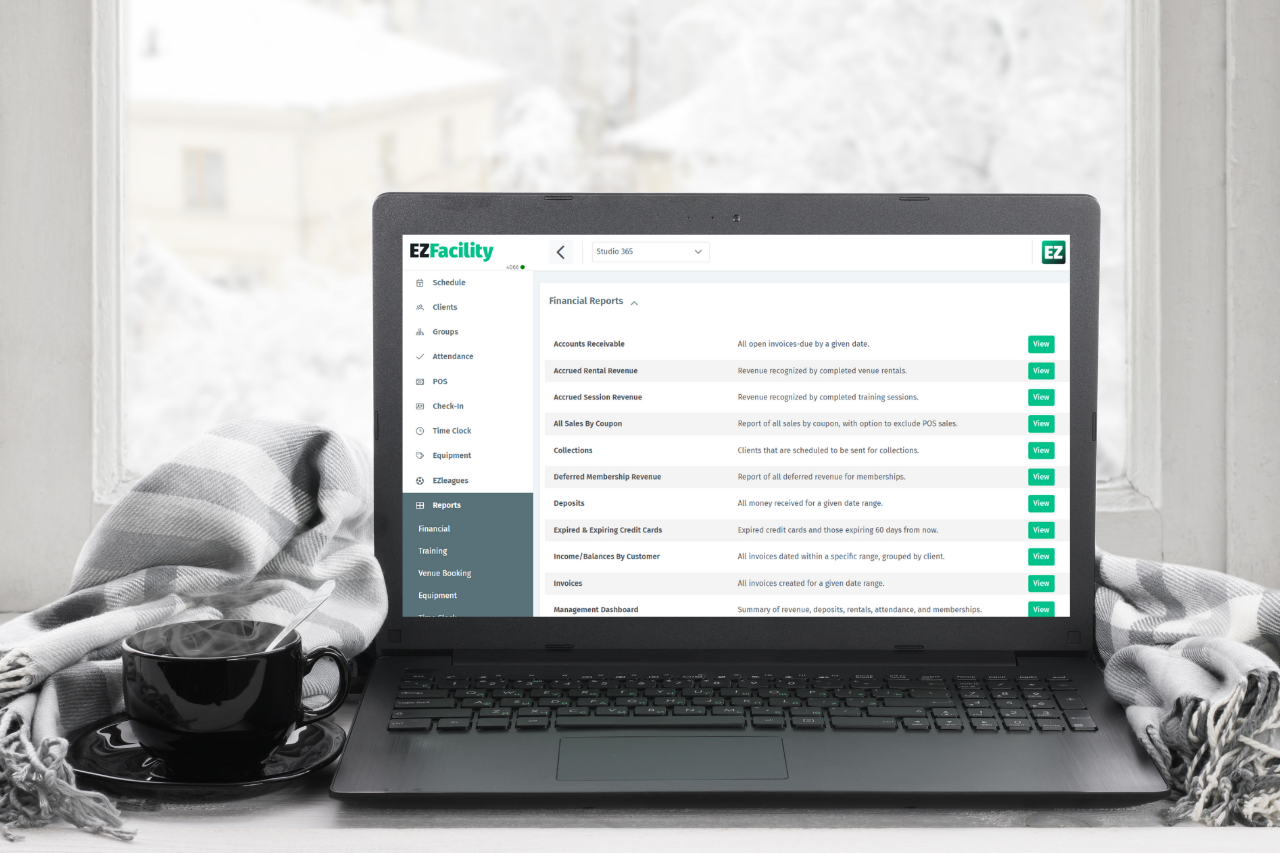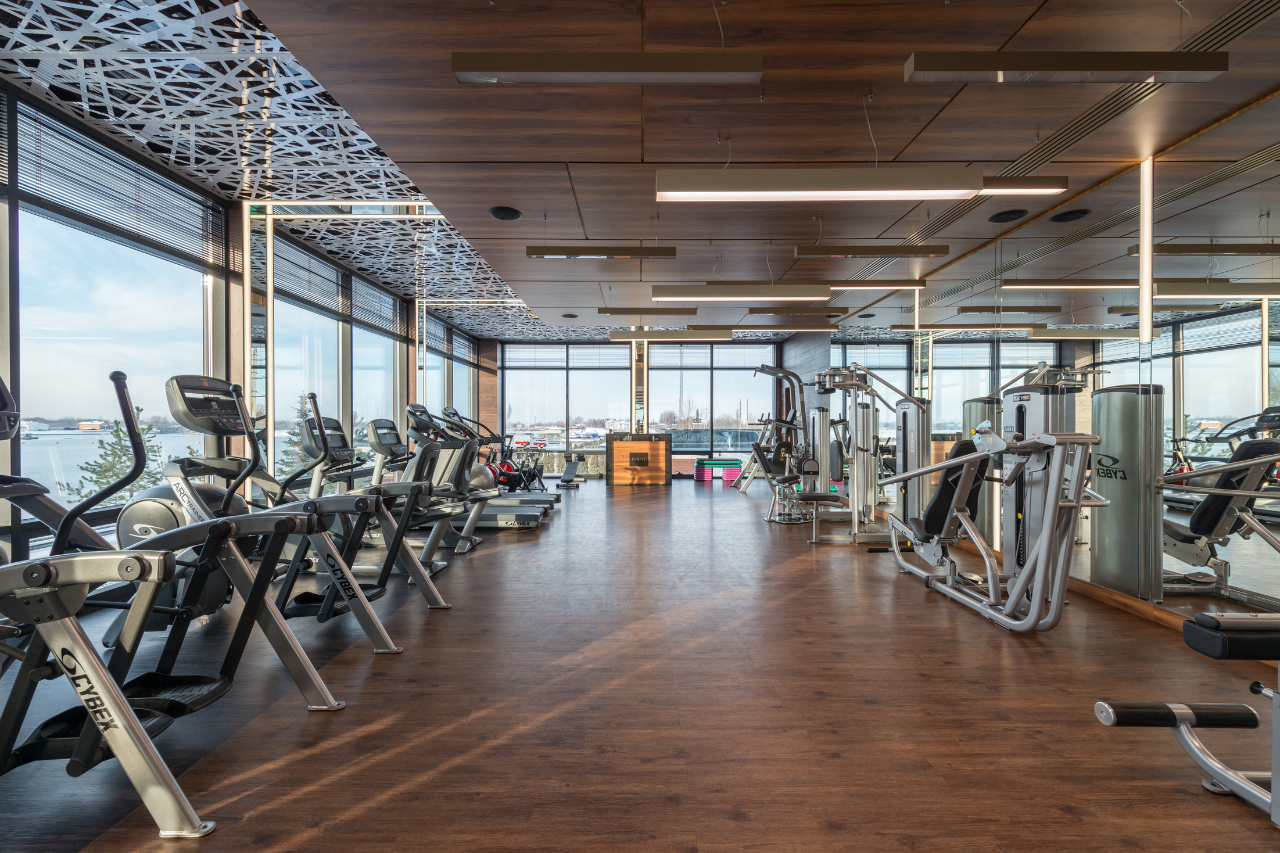Have you been looking for fresh gym marketing ideas to attract new members to your business? If you answered “Yes,” you came to the right place!
Creating a gym marketing plan is essential to the success of your fitness centres if you hope to add new customers and continue making revenue. We will help you break down the process of creating your gym marketing plan, and get you started on the right track.
The world of marketing can be overwhelming, so we did some of the legwork for you! In this post, you will find a quick introduction to why your gym marketing plan is so crucial to your business. We will also take an in-depth look at gym marketing ideas that you can use to both attract new members and bring your gym marketing plan to life!
Why is a gym marketing plan important?
Why do you need to have a plan? It’s because very few people are ever able to ace a test without first studying for it. Especially in business.
There is always going to be a certain trend you want to keep a close eye on or follow in order to grow yourself successfully. In the case of gyms, you want to track your customers. You want to know who they are and what they like and don’t like.
You can have the greatest facility with state-of-the-art machinery and top-notch instructors. However, none of that means anything if you aren’t able to attract new customers to your fitness centre and get the existing ones to stick around.
Especially in an industry that is getting bigger by the day. No, make that bigger by the second! The fitness industry is growing at such a rapid rate. So, if you hope to stay in the game, you need to make sure you are constantly learning new gym marketing ideas and applying them so your brand can continue to stand out.
Creating a marketing strategy for fitness centres
Now that you’ve gotten a glimpse into why your gym marketing plan is important, it’s time to learn how to create a marketing strategy for your fitness business. In addition to bringing in new gym members, you will also learn how marketing can build your fitness business brand altogether.
In your gym marketing plan, you can strategize for the next month, quarter or even the full year, and it doesn’t have to be super fancy or overly complex for it to work.
You just need to know these four main things—your target audience, tactics, tools, and budget. Who are you marketing to? What are your goals? What are the best gym marketing ideas to reach them? And what steps are you going to take to do so?
Target audience
The most important step to any marketing strategy is knowing who your target audience is. How can you ever get your messaging right without knowing who is going to engage with it? Marketing without targeting one or two specific groups is like sending a letter to someone you don’t know.
How would you know what to say and how to say it? It’s okay to assume your target audience will have similar interests as your fitness business.
For example, let’s say someone wants to join a gym full-time and utilize all the fitness classes offered; in this case, it would be okay to assume this individual cares about their health and wellness to some extent. Buyer personas are also another great way to get to the bottom of who your target audience is. Buyer personas are write ups on what your ideal customer is like.
Tactics and channels
Now that you’ve started to brainstorm who your target audience is, it’s important to consider which tactics/channels will be most successful in reaching this audience.
If your audience is more local, maybe it could be helpful to use some traditional marketing strategies like billboards or sponsoring community events. If your target audience uses social media, then your fitness business should be right there with them.
Tools and technology
If you aren’t comfortable taking on all of these responsibilities by yourself just yet, or there simply isn’t enough of yourself to go around, you should consider implementing gym management software. Gym management software is a computer program that runs real-time tabulations to provide the right content, to the right person, at the right time.
It can tell you which customers are attending class or alert you on who has missed out. It can tell you how much money you’ve made for the month and if your revenue is climbing or if it’s plateaued. Plus, it assists with everyday clerical tasks like checking in on your customers or sending out nurture emails.
Budget
The next thing to consider is your budget. How much money are you willing to spend on your marketing efforts?
First off, it’s always a good start to consider which tactics are free, and which ones might cost you for your benefit. In most cases, you will find that certain platforms start off with free tools for you to market your business.
For instance, you can set up your social media profiles and promote your business through sharing content at no cost to you. The same goes for setting up a Google My Business profile, which we will take a closer look at later in this text.
For starters, it’s best to pick two or three areas of your marketing plan to initiate paid marketing. If the tactics you are interested in offer free tools on a basic level, use those first. It’s a no brainer to master the free tools first before narrowing down on a tactic that you want to invest more in.
Choose relevant channels to market your gym
Once you’re ready to have your marketing strategy mapped out and your programs and people in place, it’s time to put all those notes to use. Test out the theories you’ve learned about the fitness industry, and start gaining traction.
Fortunately, living in the digital marketing age has made promoting any kind of product a lot easier than it used to be. We will dive into social media use, how to create and host a variety of gym events, follow up on every single lead, use email marketing, start a referral program, and so much more!
Online ads
Like a lot of aspects of our lives, we can use the web to streamline our marketing plan. This helps us to reach new customers in ways like never before. Digitizing your marketing plan can prove to be very successful, but how?
Statistics say three out of four customers use a search engine to find a business. So, we know there’s ample opportunity with digital marketing, but where can you start? Google has great pathways to take for fitness businesses both large and small.
A great way to start online advertising would be to use Google’s “Smart campaigns” tool. This tool allows you to set up an ad campaign in a very simple way.
All you need to start your ads is your preferred text, and an image or two if you’d like. After this step, you are good to go! You can even choose to reach your target audience by specifying your Smart campaign to a specific geographic area.
Google business profile
In addition to using Google ads, there are plenty of other digital marketing tools, including a Google business profile. A Google My Business Profile is a free listing for your business that pops up when users search your business name on either Google or Google Maps.
This listing will present users with a short summary that informs the purpose of your business. This summary should also include your fitness business’s address, phone number, hours, website, Google reviews, and any social media links.
This information will show to every single person who searches your business on Google, so it is crucial to make sure that this information is consistently updated and accurate.
Social media
Social media is not only a great way to promote your business, but it is also a place to create a strong brand image for your fitness business. Each social media platform has a different set of norms with varying user demographics.
We will break down the different platforms below. This way you can get an understanding of which platforms you’ll want to tackle first in your gym marketing plan. If you want to dive deeper into various social media marketing tactics, check out our 10 best tips.
Facebook
As of 2022, Facebook is still the biggest social media platform in the world. It averages just over 2.89 billion monthly users, and it was the first social platform to achieve more than one billion registered profiles.
However, we shouldn’t let this statistic drive all our attention to Facebook. Facebook is a great platform to cultivate community and connect to groups who are likely to show interest in your fitness business.
Individuals within the age range 35-44 are inclined to use Facebook as their go-to platform. This is worth considering when developing a strategy for your Facebook page.
Tiktok
If you are looking for a fun and trendy way to engage with a younger demographic, TikTok is your platform. In 2018, TikTok merged with a social app formerly known as Musical.ly. This helped the platform reach a global audience that is continuing to grow at a high rate.
On this platform, the main idea is to share short, punchy vertical video content that is easy to engage with. TikTok has been able to take the most engaging media (video content) and personalize it for users like never before.
If you have ever researched how social media platforms hook people in, you’ve most likely come across the concept of social media algorithms.
Sidenote: A social media algorithm can be described as a system to filter through the high volume of content posted to social networks each day.
Maybe you can recall a time when the posts that inhabited your feeds happen to be there because they were the most recent; those were the beginning days of social media.
Social Media platforms now use algorithms to show content based upon what the user engages most with, instead of what is most recent.
TikTok has found a way to create the most innovative and personalized algorithm. You see, TikTok doesn’t take into account number of followers when spreading content to the masses. Instead, they are focused solely on what content users personally engage with.
This will help your gym marketing strategy because, unlike other platforms that require you to have a decent following before spreading your content, TikTok will prioritize sharing your content with anyone they feel will be interested in it.
Instagram
Now that we’ve covered the two social platforms (Facebook and TikTok) that tend to be the furthest apart in user demographics, it is important to know who the middleman is: Instagram.
Instagram is a social media platform where users can share aesthetically pleasing image and video content. This platform was acquired by Meta in 2012 for a whopping 1 billion USD.
This is why it is fairly easy to connect your Facebook marketing strategy to Instagram. Often times you can share your Instagram content to Facebook and vice versa with just one simple click. Just make sure to sync your Facebook page to your Instagram account for a simple approach to managing social.
In addition to having an age demographic that sits in between Facebook and TikTok’s main age ranges, Instagram also does a fantastic job of mimicking key features from both platforms. 78.1% of Facebook users also use Instagram, which shows the two platforms are similar enough for users to comfortably utilise both.
On the other side of the dice, Instagram has a feature called “Reels” which is almost identical to the vertical video-sharing craze that TikTok gained its traction from.
It is even possible to share your original TikTok content in Instagram Reels. With this information in mind, it is easy to see that Instagram pairs nicely with either Facebook or TikTok.
Fitness influencers
Fitness influencers are also a terrific way to leverage marketing through social media. You may have heard of “social media influencers” in recent years. These individuals can already be celebrities or have gained popularity for their presence on certain social media platforms.
Social influencers have become especially big in the fitness industry, therefore coining the term “fitness influencers.” You usually can get a fitness influencer to shout out your business by paying a fee or giving the influencer free goods or services pertaining to your fitness business.
These are great people to get connected with because they can also be a direct line to your target audience!
Create a website
Now that you know some vital detail about leveraging social, the next thing you can do in your gym marketing plan is find people who specialize in marketing and data to use those inputs from your gym management software.
If your budget allows it, hiring an experienced digital marketing team to help you create your business goals and execute a tailored plan can be extremely helpful. Our sister company 97 Display not only integrates with our EZFacility software, but they also specialise in website design and digital marketing specifically for fitness businesses.
Their job is to help you run your marketing efforts and increase brand awareness on social media. They also drive traffic to your doorsteps through organic and paid searches and keep you up to date on month-over-month business-related growth.
If you are more of a “do it yourself” kind of person or looking to cut costs in this area, Wix is a great place to build your own website with little to no prior knowledge.
They also have a suitable selection of easy-to-use analytics at your fingertips. This can help you track how your site is doing in terms of the amount of traffic, and where that site traffic is clicking/engaging.
Traditional marketing
Maybe a digital marketing approach isn’t your thing, or you would prefer some traditional tactics to draw in new gym members. In this case, there are traditional agencies as well, who focus more on commercials, billboards, radio ads, and other efforts.
You may think these marketing methods seem dated at first, but the truth is that they can still be a beneficial way to market small fitness businesses. In fact, traditional marketing is one of the best ways to both connect with an older demographic as well as get your name out in your local community.
Overall, it is always a good idea to have a diversified mix of channels within your gym marketing plan, so be sure to check out some traditional methods!
Referrals and loyalty programs
Referrals and loyalty programs are a wonderful way to not only bring in new clients but also to build rapport with your current client base. After all, who’s better to reach out to your target audience other than your loyal client base?
Though there are many ways to offer referrals, we will give an example of what a basic referral or loyalty program could look like. Offer your current clients and whoever they refer a discounted month if the referred person signs up.
You could even go further with this if the referred client stays a certain amount of time.
For example, if the referred client stays for at least 3 months, reward the client who referred them with a free month! This is just a basic example to get your referral/loyalty program ideas flowing, but the possibilities are endless!
Offer a free trial pass
You may also want to consider offering a free trial pass for your fitness business. This is beneficial for both you and your clients. A prospective gym member wants to make sure your fitness business is a good fit.
On the other hand, you want to make sure your clients are happy with your fitness business. Offering a free trial pass will ultimately attract more clients because they won’t feel pressured to commit right away.
Community events and fitness challenges
Some other good tactics to add to your gym marketing plan are community events and fitness challenges. Both community events and fitness challenges will not only build up buzz about your fitness business, but they will also give you a deeper connection within your community as well as with your clients.
Consider giving back to your community by sponsoring an event. When you attend the event, you could have some fun merchandise/infographics to share with event goers. You could even tap into your social media channels to promote a fitness challenge!
This will be a fun and engaging way to connect with your current clients and target audience at the same time.
Email marketing
Despite email marketing being around for a while, it is still one of the most important marketing channels to consider within your gym marketing plan. There are over 4 billion email users worldwide, which means your target audience most likely uses email.
This gives us context as to why getting the right email approach for your target audience is key. Keeping this in mind, let’s talk about some key points to get your email marketing game up and running.
Who’s your target audience?
Now that we’ve established your target audience most likely uses email, let’s dive deeper into who these individuals actually are. This can include but is not limited to demographic based upon age or interests. Are they more likely to check their email in the morning, night, or maybe afternoon?
Practice email writing
Maybe you will have someone else do the email writing for your gym marketing plan, but if not, it is always best to practice your email writing. Remember, not all emails should sound the same if you want different results from each.
For example, if you would like to receive an excellent response rate on a marketing email, personalise it! Take one of your clients for example and draft an email to them as if you were writing a letter. When there is a personal touch, people are more likely to respond.
For a more informational email, try adding an image and video content to make it more engaging. Always ask yourself when you practice email writing, “What action do I want my target audience to take?” Let your “call-to-action” (CTA) be your guiding light and you will be golden!
Look into software for email writing
When you are sending mass emails at various times, it can become quite difficult to manage within one email account. In addition to managing billing, scheduling, and other gym management tasks, EZFacility also has tools to create and send mass emails.
This feature can also be used for email marketing purposes. If you would like to utilize a platform that is specifically niche to email marketing, check out Hubspot. They let you create custom email templates with plenty of resources to get your email marketing campaigns off the ground.
You can also use software to measure the analytics and assess the performance of your emails. For more content on email marketing, see the ten emails you should be sending.
Measuring success
Similarly to how there is software to track performance of your email campaigns, there is also software to measure the success for your overall marketing strategy. Hubspot software also can track your marketing efforts in addition to email.
Semrush is another marketing analytic software that gives you the tools to track the performance of your overall marketing strategy. This might include the performance of your website, lead forms, and so much more. Utilising software to measure marketing data is key.
It allows you to see where you are performing well while also showing you where you could improve.
Pivot, adapt, repeat
With any goal or plan in life, there is always going to be the need for evaluating what is working, and what isn’t.
The same goes for your gym marketing plan. It is best to constantly be checking in on your data and performance to see what can improve, although don’t overanalyse it.
It’s best to set certain time periods, whether that’s monthly or quarterly, and review if you’re making significant progress towards the marketing goals you set.
Conclusion
Let’s review for a second and start at the very beginning. So, what is it we covered exactly?
Your gym marketing plan is basically your written marketing strategy or game plan. It’s the overall record you outline for yourself and refer to often during the length of your business venture.
Don’t be afraid to jump in right away and jot down business goals. The point is to consistently tweak it with any new information you believe is pertinent to keeping your gym growth at a healthy rate.
Good luck with using these gym marketing ideas to build up a loyal customer base. We hope this post has new or valuable content for you! Check back often for more fitness related topics and industry savvy tips.









